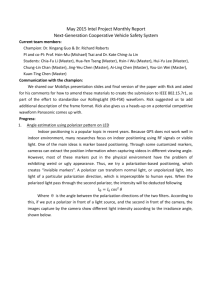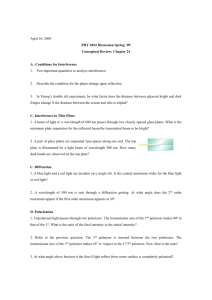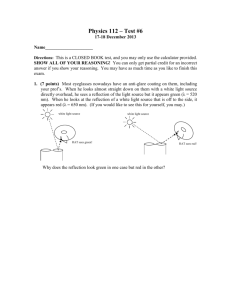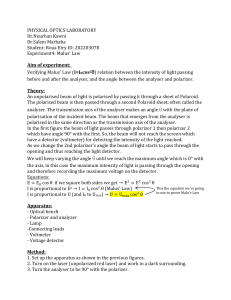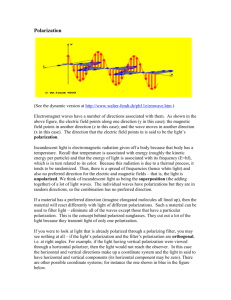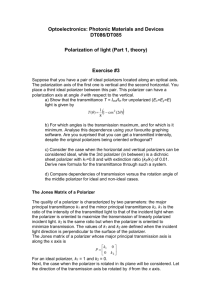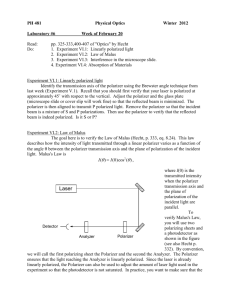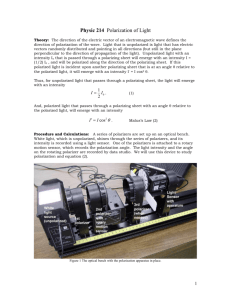Quiz 8a_key
advertisement
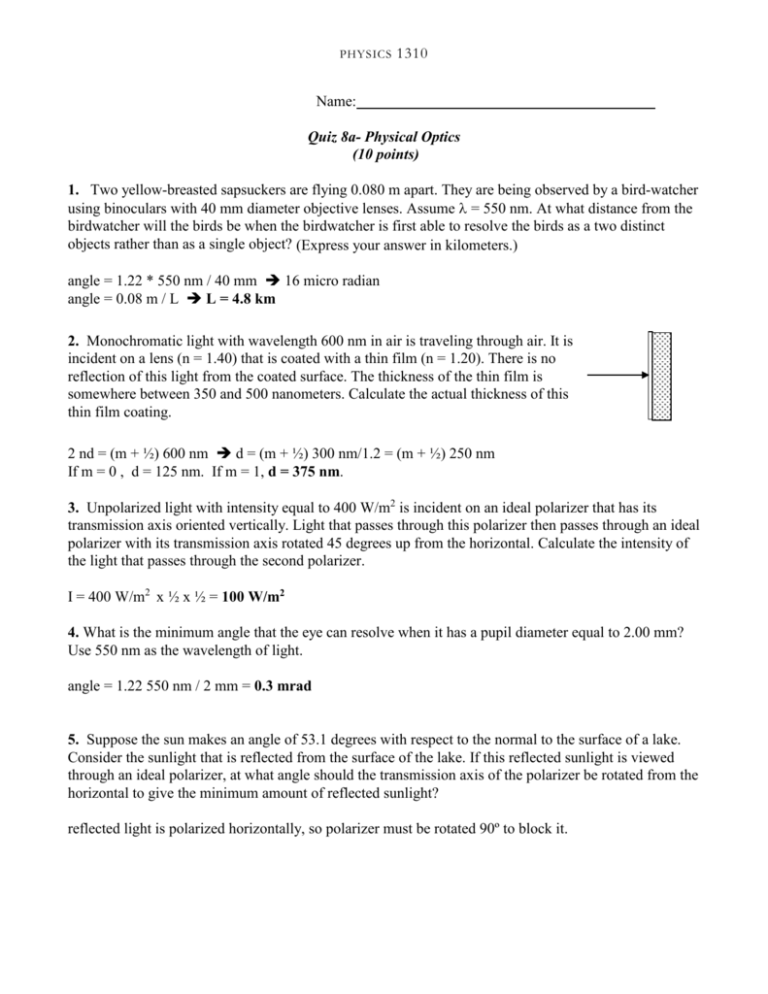
PHYSICS 1310 Name: Quiz 8a- Physical Optics (10 points) 1. Two yellow-breasted sapsuckers are flying 0.080 m apart. They are being observed by a bird-watcher using binoculars with 40 mm diameter objective lenses. Assume = 550 nm. At what distance from the birdwatcher will the birds be when the birdwatcher is first able to resolve the birds as a two distinct objects rather than as a single object? (Express your answer in kilometers.) angle = 1.22 * 550 nm / 40 mm 16 micro radian angle = 0.08 m / L L = 4.8 km 2. Monochromatic light with wavelength 600 nm in air is traveling through air. It is incident on a lens (n = 1.40) that is coated with a thin film (n = 1.20). There is no reflection of this light from the coated surface. The thickness of the thin film is somewhere between 350 and 500 nanometers. Calculate the actual thickness of this thin film coating. 2 nd = (m + ½) 600 nm d = (m + ½) 300 nm/1.2 = (m + ½) 250 nm If m = 0 , d = 125 nm. If m = 1, d = 375 nm. 3. Unpolarized light with intensity equal to 400 W/m2 is incident on an ideal polarizer that has its transmission axis oriented vertically. Light that passes through this polarizer then passes through an ideal polarizer with its transmission axis rotated 45 degrees up from the horizontal. Calculate the intensity of the light that passes through the second polarizer. I = 400 W/m2 x ½ x ½ = 100 W/m2 4. What is the minimum angle that the eye can resolve when it has a pupil diameter equal to 2.00 mm? Use 550 nm as the wavelength of light. angle = 1.22 550 nm / 2 mm = 0.3 mrad 5. Suppose the sun makes an angle of 53.1 degrees with respect to the normal to the surface of a lake. Consider the sunlight that is reflected from the surface of the lake. If this reflected sunlight is viewed through an ideal polarizer, at what angle should the transmission axis of the polarizer be rotated from the horizontal to give the minimum amount of reflected sunlight? reflected light is polarized horizontally, so polarizer must be rotated 90º to block it.


